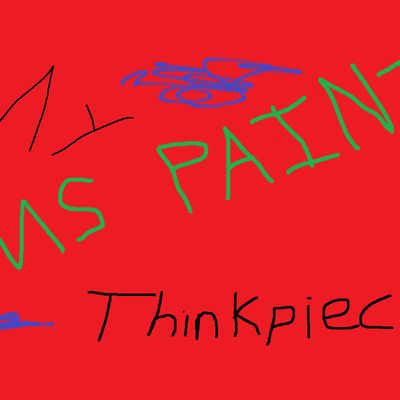
A great ripple of anguish traveled across the internet yesterday upon the announcement that Microsoft Paint would be sent to the farm upstate for some well-deserved rest and relaxation. According to notes in a Microsoft update first noticed by The Guardian, the rinky-dink drawing program will be deprecated when Windows 10 releases its big update in the fall. Deprecated doesn’t mean Microsoft is killing MS Paint, just that it’s no longer going to expend resources on it: The program will cease updating, and disappear further into the system’s menus, buried unless you really want to seek it out. From Microsoft’s point of view this makes sense: The company introduced a completely new app called Paint 3D in its “creator’s update” earlier this year. MS Paint had become, for better or worse, legacy software.
But try telling that to the internet. Following yesterday’s news of Paint’s supposed demise, and a sudden bout of grief across the web, Microsoft was forced to issue a placating statement confirming that the classic software would be available via its Windows App Store. MS Paint — the ugliest, most limited, lowest-rent drawing application — is also one of the most beloved programs ever created. As it quickly learned, rather than brushing aside a piece of forgotten and disused software, Microsoft had announced the deprecation of one of the foundation stones of digital culture.
MS Paint’s legacy can be felt across pretty much every major consumer-technology product of the last two decades. For most of the digital artists and designers who create the user experiences you encounter on your computer, MS Paint was the first drawing software they ever used — their sloppy, imprecise, mouse-controlled lines and 256-color limit foreshadowing future careers in Illustrator or InDesign. But it’s not just people who became creative professionals. If you grew up on Windows (and that likelihood is sky-high), your primary mode of creative output on your computer was Paint. There are few user experiences more universal than forgetting to close a shape all the way and having the bucket tool ruin a project — and easily reverting with an quick Ctrl + Z. My family was never one to put drawings on the fridge, but my dad did have an MS Paint drawing of mine — a Godzilla-like monster attacking a city — as his desktop background at work for a while.
MS Paint’s ubiquity and its ease of use meant that anyone who didn’t have the budget for a professional used it for everything — from elementary-school kids creating school projects to wild conspiracy theorists connecting dots in their works of “Chart Brut”; from Sonic the Hedgehog fans creating folk masterpieces to gossip bloggers drawing penises on paparazzi photos. This meant in turn that its aesthetic quickly blanketed the web. Unless someone was painting with pixel-perfect precision, you could tell an MS Paint creation pretty easily: They looked, well, ugly. Lines drawn with computer mice are rarely straight; even the straight-line tool had jagged edges, the result of being a raster-based image editor, rather than vector-based (that is, formed by pixels instead of by proportional curves). Due to technological constraints, every MS Paint drawing looked like it had been done by a little kid, even when the mouse-wielder had the steady hands of a brain surgeon.
Still, for years, MS Paint was the quickest and easiest way to annotate an image, however sloppy those marks might be. It was always available, and its availability loaned the early World Wide Web — an era when the web was largely populated by individuals kludging together websites and forum posts using whatever they had at hand — a slapdash feel that made each image unique and instantly recognizable. Paint was, like all great and popular software, just good enough.
The web has gotten cleaner and more centralized, and the options available to users, broader and more competent. The app’s feature set was quickly outdone by other free alternatives, and it was obviously meant for professional use. The idea of pack-in image-editing software is now mostly dead, and third-party apps are picking up the slack.
Maybe most important, the kind of quick-and-dirty, amateur computer use that once was MS Paint’s sweet spot has shifted dramatically to mobile devices — tablets and smartphones whose touchscreens provide different kinds of drawing possibilities. Now, you can do what you might have once done in Paint in the photo app of your phone, or on Snapchat or Instagram. Put another way, Paint became obsolete not because its feature set was too limiting or primitive, but because there’s something quicker, dirtier, and easier to use. And in every doodled Snap and Insta, there’s the same kind of charming clumsiness. That look — the continuing, wonderful, democratic ugliness of the web — has its roots in Paint.





























